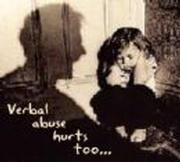About
CHILD ABUSE/ NEGLECT CHILD SEXUAL ASSAULT
CHILD ABUSE
CHILD MALTREATMENTtypes of maltreatment such as "abaCHILD MALTREATMENT · Child protective services across the country found an estimated 896,000 children to be victims of maltreatment (neglect or abuse).
· Sixty-one percent of child maltreatment victims suffered neglect; 19 percent were physically abused; 10 percent were sexually abused; and 7 percent were emotionally or psychologically maltreated. In addition, 18.9 percent of victims experienced "other" types of maltreatment such as "abandonment," "threats of harm to the child," and "congenital drug addiction."
· Fifty-two percent of child maltreatment victims were girls and 48 percent were boys.
· More than one-half of all child victims were white (54 percent); one-quarter (26 percent) were African-American; and one-tenth (11 percent) were Hispanic. American Indians or Alaska Natives accounted for 2 percent of victims, and Asian-Pacific Islanders accounted for 1 percent of victims.
· Approximately 40 percent of child victims were maltreated solely by their mothers; another 19 percent were maltreated solely by their fathers; 18 percent were abused by both parents. Child victims abused by a non-parental perpetrator accounted for 13 percent of the total.
· The youngest children (from birth through age 3) were the most likely to experience recurring maltreatment.
· Children abused by someone other than a parent were 16 percent less likely to experience recurrence than children who were abused by their mother.
· Victimization rates are inversely proportional to the age of the child--the older the child, the less likely he or she is to be maltreated.
· In 2002, an estimated 1,400 children died due to child abuse or neglect.16 · Five percent of child molesters released from prison commit a new sex offense within three years of their release.
· Twenty-nine children were murdered by their babysitters in 2003.
· Victims of child abuse comprised 21 percent of the recipients of crime victim compensation in 2003.
· The most significant predictor of whether a battered woman will physically abuse her child is having been physically abused by her own mother-not being battered by her partner.
RIGHTS FOR CHILDREN
To be a child
To be here
To be shown respect at all times
To food, clothing, and cleanliness.
To a safe, nurturing environment.
To tender care when I am sick.
To try to do things for myself, and to
Seek and receive help when I need it.
To express myself without interruption
To move freely at my own initiative.
To make friends and play with them.
To engage in meaningful activities.
To develop at my own pace.
To make a choice.
To make a mistake.
To privacy.
To be heard.
Jane Scoggins Bauld
Signs of Abuse according to CPS
Emotional Abuse: includes putting down, insulting, being overly critical, rejecting, invalidating, manipulating, controlling, or withholding love.
Physical Abuse: includes hitting, slapping, pushing, punching, burning, or causing physical pain or injury.
Sexual Abuse: includes touching, kissing or hugging a child inappropriately, fondling, involving a child in - or exposing a child to - pornography or promiscuous sexual activity.
Neglect: includes failing to meet the basic needs of a child, leaving a child alone or exposed to danger or failing to provide adequate care and protection.
